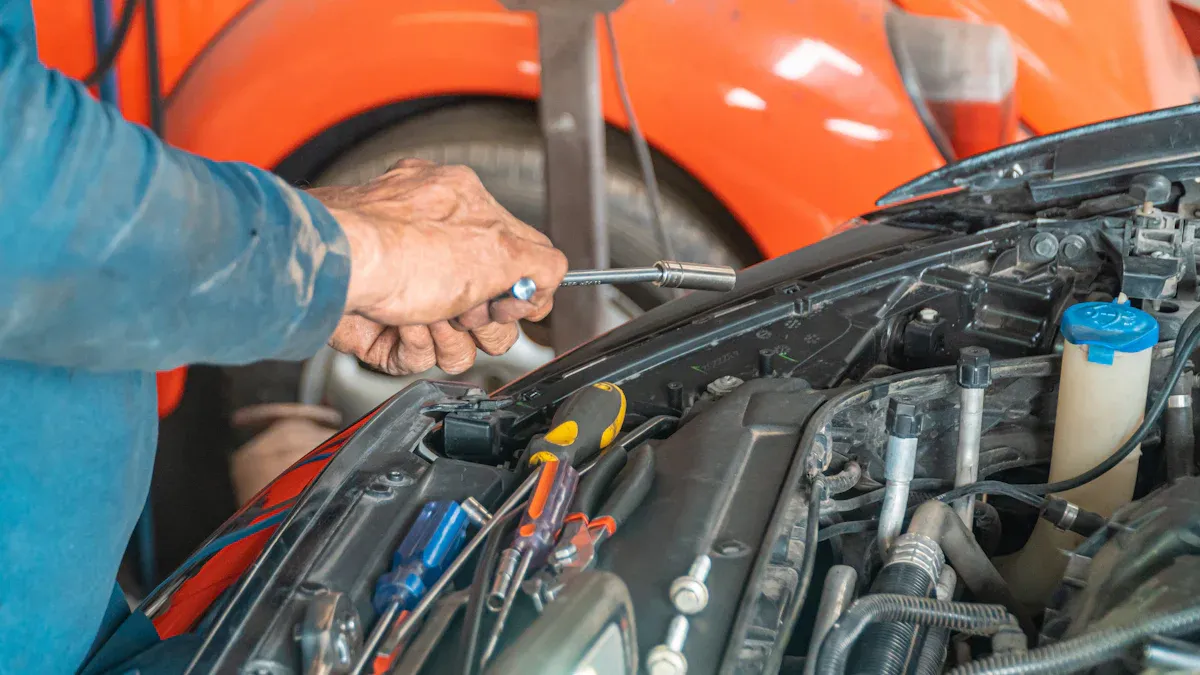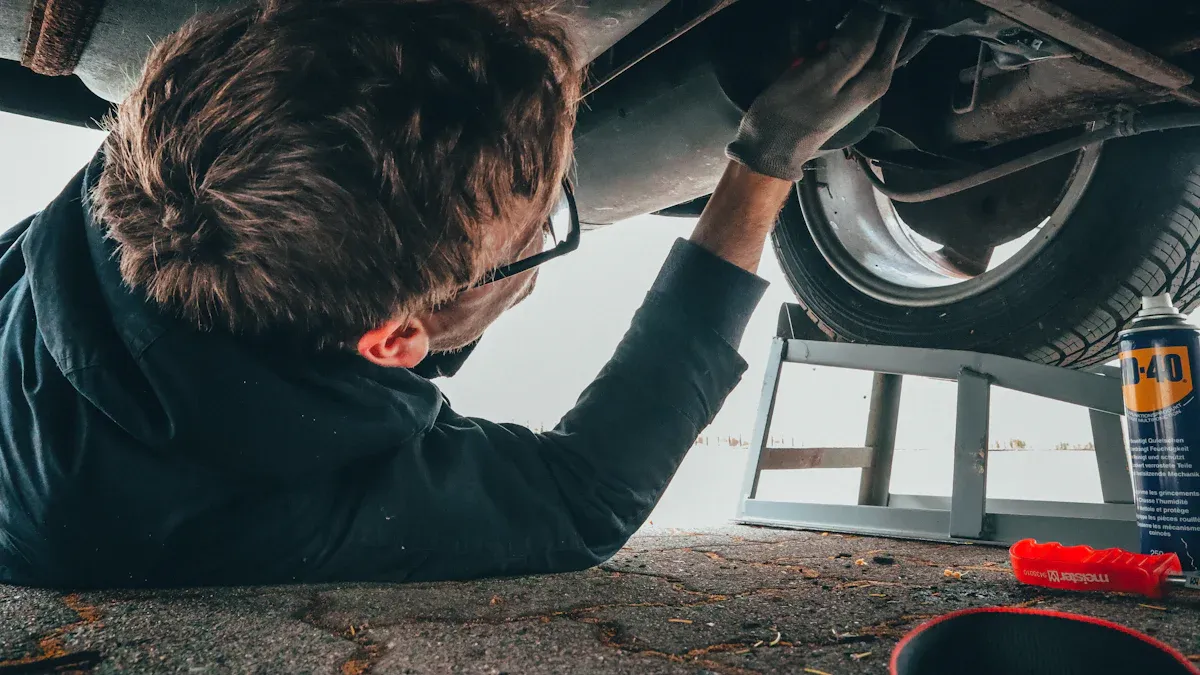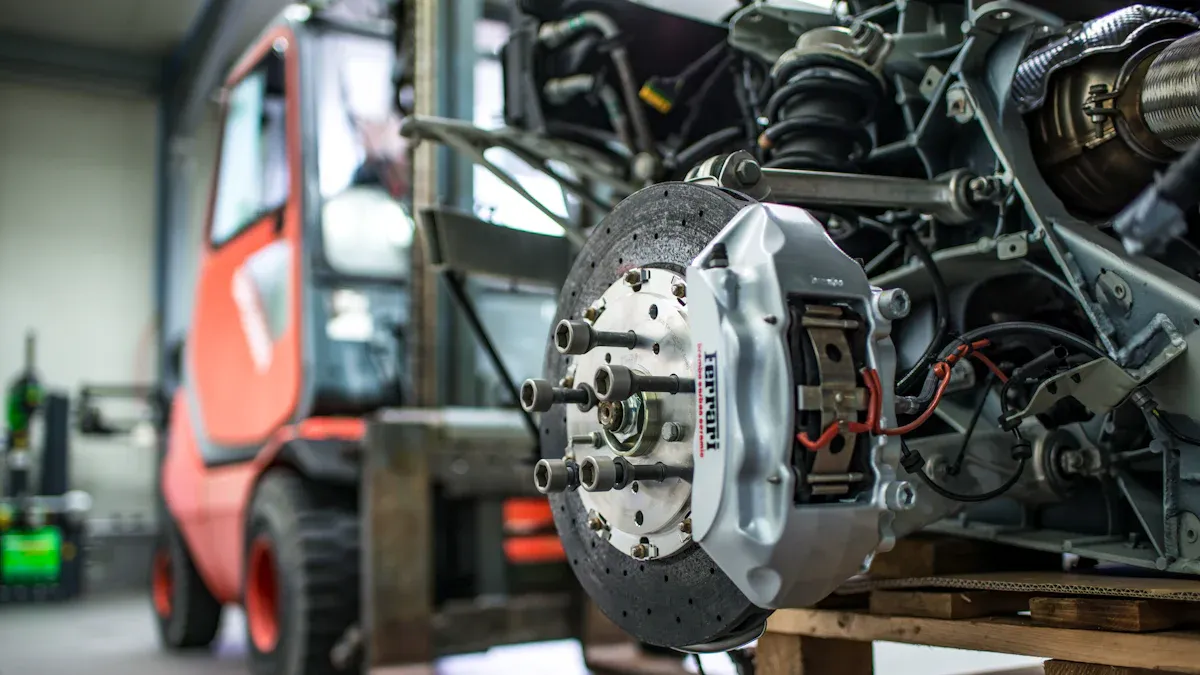
Replacing a clutch slave cylinder can cost between $219 and $450. Labor makes up a big chunk of this, ranging from $110 to $139. Parts usually fall between $109 and $123. If your vehicle needs a master cylinder replacement too, expect the price to climb. Catching issues early can save you money.
Key Takeaways
- Changing a clutch slave cylinder costs $219 to $450. The cost includes labor and parts, so always ask for a price estimate before fixing it.
- Look out for problems like hard gear shifting or fluid leaks. Fixing these early can help you avoid bigger, more expensive problems.
- Think about your skills before trying to replace it yourself. If you’re not sure, ask a mechanic to do it right and avoid mistakes.
Factors That Affect the Cost of Replacing a Clutch Slave Cylinder
Labor Costs
Labor costs can vary widely depending on where you take your car for repairs. Mechanics typically charge by the hour, and replacing a clutch slave cylinder can take a couple of hours. If you go to a dealership, you might pay more because their hourly rates are usually higher. Independent repair shops often charge less, but it’s important to choose a reputable one. Always ask for an estimate before agreeing to the work.
Vehicle Make and Model
Your car’s make and model play a big role in determining the cost. Some vehicles have clutch slave cylinders that are easier to access, which means less labor time. Others might require removing additional components, making the job more complex and expensive. Luxury or imported cars often have higher parts and labor costs due to specialized designs.
Quality of Replacement Parts
Not all replacement parts are created equal. You’ll find options ranging from budget-friendly aftermarket parts to high-quality OEM (Original Equipment Manufacturer) parts. While aftermarket parts can save you money upfront, they may not last as long. Investing in a durable clutch slave cylinder can save you from future repairs.
Additional Repairs (e.g., master cylinder replacement)
Sometimes, replacing the clutch slave cylinder isn’t enough. If the master cylinder is also failing, you’ll need to replace it too. This adds to both the parts and labor costs. It’s a good idea to have your mechanic inspect the entire clutch system to avoid multiple trips to the shop.
Regional Labor Rate Differences
Where you live can also impact the cost. Labor rates tend to be higher in urban areas compared to rural ones. For example, a repair in New York City might cost significantly more than the same job in a small town. If you’re looking to save, consider getting quotes from shops in nearby areas.
Symptoms of a Failing Clutch Slave Cylinder

If your clutch isn’t working as smoothly as it used to, your clutch slave cylinder might be the culprit. Here are some common signs to watch out for:
Difficulty Shifting Gears
Have you noticed it’s harder to shift gears? This could be one of the first signs of a failing clutch slave cylinder. When the cylinder isn’t working properly, it can’t generate enough pressure to engage or disengage the clutch. This makes gear changes feel stiff or even impossible.
Spongy or Soft Clutch Pedal
Does your clutch pedal feel soft or spongy when you press it? This happens when air or fluid leaks into the hydraulic system. A healthy clutch pedal should feel firm and responsive. If it doesn’t, the clutch slave cylinder might need attention.
Clutch Fluid Leaks
Leaking clutch fluid is another red flag. You might spot a puddle of fluid under your car or notice the fluid level in the reservoir dropping. This leak often points to a damaged or worn-out clutch slave cylinder.
Unusual Noises When Using the Clutch
Strange noises, like squeaking or grinding, when you press the clutch pedal can also signal trouble. These sounds might mean the clutch slave cylinder isn’t functioning as it should.
Complete Clutch Failure
In the worst-case scenario, the clutch might stop working altogether. If this happens, you won’t be able to shift gears at all. At this point, replacing the clutch slave cylinder becomes urgent.
Tip: If you notice any of these symptoms, don’t wait. Addressing the issue early can save you from more expensive repairs later.
Can You Replace a Clutch Slave Cylinder Yourself?
Replacing a clutch slave cylinder yourself is possible, but it’s not a task for everyone. It requires the right tools, mechanical skills, and a good understanding of your car’s clutch system. Let’s break it down so you can decide if this is something you want to tackle.
Tools and Skills Needed
You’ll need a basic set of tools, including wrenches, a jack, jack stands, and a brake bleeder kit. A repair manual for your specific vehicle is also essential. Mechanical skills are just as important. If you’re comfortable working under your car and have experience with hydraulic systems, you might be ready for this job.
Steps for DIY Replacement
- Prepare your car: Park on a flat surface, engage the parking brake, and disconnect the battery.
- Access the clutch slave cylinder: Use the jack and stands to lift the car safely.
- Remove the old cylinder: Disconnect the hydraulic line and mounting bolts.
- Install the new cylinder: Attach it securely and reconnect the hydraulic line.
- Bleed the clutch system: Remove air from the system to ensure proper function.
- Test the clutch: Lower the car and check if the clutch works smoothly.
Risks of DIY Repairs
DIY repairs can save money, but they come with risks. If you don’t bleed the system correctly, the clutch might not work. Mistakes during installation could damage other parts. Always double-check your work.
When to Consult a Professional
If you’re unsure about any step, it’s better to consult a professional. Mechanics have the tools and experience to replace the clutch slave cylinder quickly and safely. Sometimes, paying for expertise is worth avoiding costly mistakes.
How Long Does It Take to Replace a Clutch Slave Cylinder?
Professional Replacement Time
If you take your car to a professional mechanic, replacing a clutch slave cylinder usually takes about 1 to 2 hours. Mechanics have the tools and experience to work efficiently. They know how to access the part quickly and handle any unexpected issues. Some vehicles may take longer if the clutch slave cylinder is hard to reach or if other parts need to be removed first. Always ask your mechanic for an estimated time when you drop off your car.
DIY Replacement Time
Doing it yourself can take longer, especially if you’re not familiar with the process. For most people, it might take 3 to 5 hours. You’ll spend extra time gathering tools, reading the repair manual, and carefully following each step. If you’ve done similar repairs before, you might finish faster. However, bleeding the clutch system can be tricky and may add more time to the job.
Factors That May Extend the Time
Several factors can make the replacement take longer. If your car has a complex design, accessing the clutch slave cylinder might require removing other components. Rusty or stuck bolts can also slow you down. Additionally, if you discover other issues, like a failing master cylinder, you’ll need extra time to fix those too. Planning ahead and having the right tools can help you avoid delays.
What Happens During the Replacement Process?

Diagnosing the Issue
Before replacing the clutch slave cylinder, the mechanic will confirm it’s the source of the problem. They’ll inspect the clutch system for leaks, check the fluid levels, and test the clutch pedal’s responsiveness. If you’re doing this yourself, look for signs like fluid leaks or a spongy pedal. A proper diagnosis ensures you’re not replacing parts unnecessarily.
Removing the Old Clutch Slave Cylinder
Once the issue is confirmed, the next step is removing the faulty part. You’ll need to locate the clutch slave cylinder, which is usually near the transmission. After disconnecting the hydraulic line and unbolting the cylinder, it can be carefully removed. Be prepared for some fluid to spill, so keep a container or rags handy.
Installing the New Clutch Slave Cylinder
With the old part out, it’s time to install the new one. Align it properly and secure it with bolts. Then, reconnect the hydraulic line. Make sure everything is tightened to avoid leaks. If you’re unsure about the process, refer to your vehicle’s repair manual for guidance.
Bleeding the Clutch System
Bleeding the clutch system removes air trapped in the hydraulic lines. This step is crucial for the clutch to work smoothly. You’ll need a brake bleeder kit or a helper to press the clutch pedal while you release the air. Follow the instructions carefully to avoid introducing more air into the system.
Testing the Clutch
After everything is reassembled, test the clutch. Press the pedal to ensure it feels firm and responsive. Shift through the gears to confirm smooth operation. If the clutch doesn’t work as expected, double-check your work or consult a professional.
Replacing a clutch slave cylinder doesn’t have to be overwhelming. Catching early signs like fluid leaks or gear-shifting trouble can save you money and hassle. DIY repairs might seem tempting, but they require tools and time. If you’re unsure, trust a mechanic to diagnose and fix the issue quickly and safely.
FAQ
How do I know if my clutch slave cylinder needs replacing?
Look for signs like difficulty shifting gears, a spongy clutch pedal, or fluid leaks. If you notice these, it’s time to inspect the cylinder.
Can I drive with a failing clutch slave cylinder?
It’s not safe. A failing cylinder can lead to complete clutch failure, leaving you unable to shift gears. Address the issue as soon as possible.
Is it worth replacing the clutch slave cylinder myself?
If you’re confident with tools and car repairs, DIY can save money. Otherwise, hiring a professional ensures the job is done correctly and avoids costly mistakes.
Post time: Apr-01-2025

